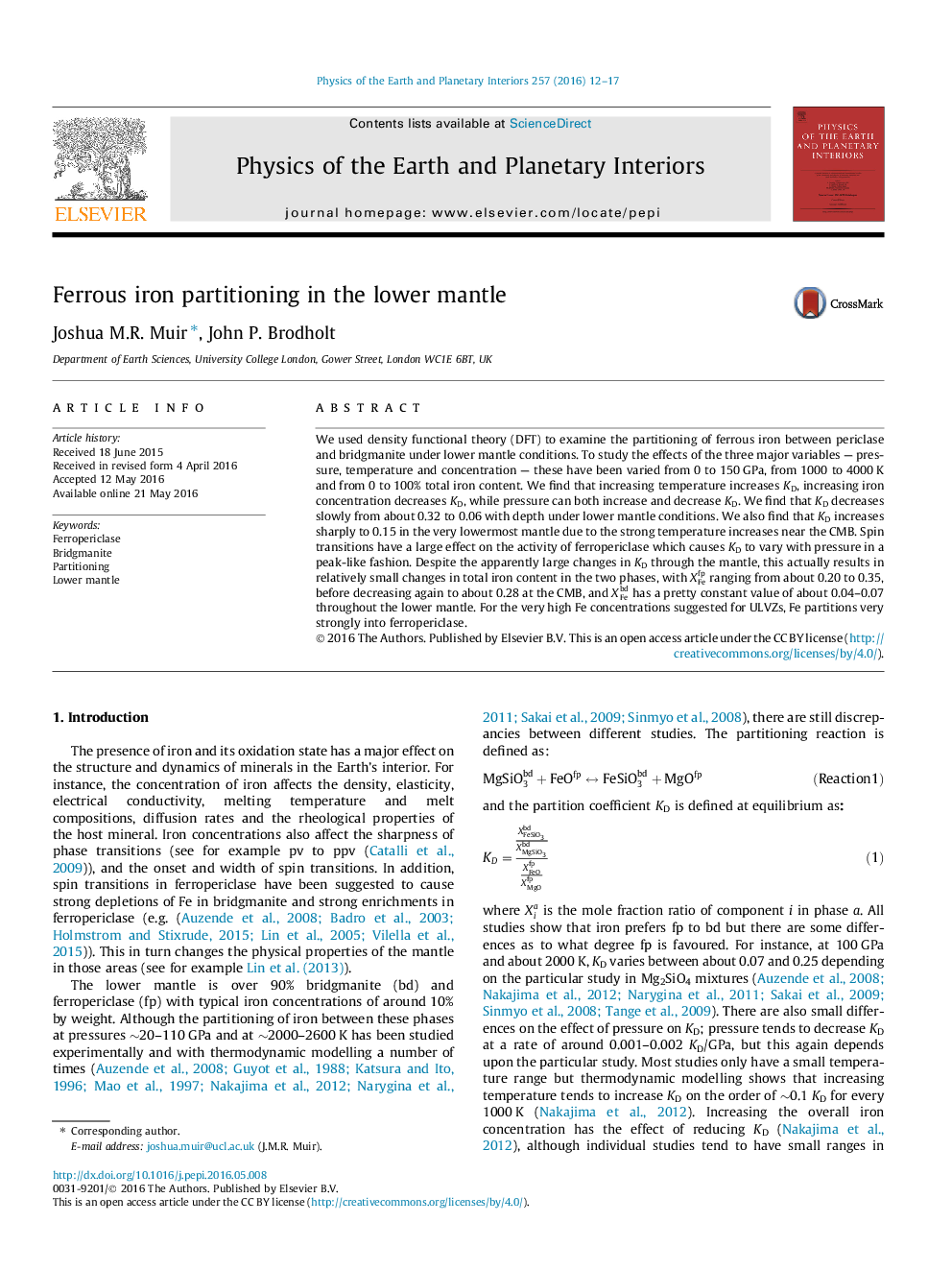| Article ID | Journal | Published Year | Pages | File Type |
|---|---|---|---|---|
| 6447459 | Physics of the Earth and Planetary Interiors | 2016 | 6 Pages |
Abstract
We used density functional theory (DFT) to examine the partitioning of ferrous iron between periclase and bridgmanite under lower mantle conditions. To study the effects of the three major variables - pressure, temperature and concentration - these have been varied from 0 to 150Â GPa, from 1000 to 4000Â K and from 0 to 100% total iron content. We find that increasing temperature increases KD, increasing iron concentration decreases KD, while pressure can both increase and decrease KD. We find that KD decreases slowly from about 0.32 to 0.06 with depth under lower mantle conditions. We also find that KD increases sharply to 0.15 in the very lowermost mantle due to the strong temperature increases near the CMB. Spin transitions have a large effect on the activity of ferropericlase which causes KD to vary with pressure in a peak-like fashion. Despite the apparently large changes in KD through the mantle, this actually results in relatively small changes in total iron content in the two phases, with XFefp ranging from about 0.20 to 0.35, before decreasing again to about 0.28 at the CMB, and XFebd has a pretty constant value of about 0.04-0.07 throughout the lower mantle. For the very high Fe concentrations suggested for ULVZs, Fe partitions very strongly into ferropericlase.
Related Topics
Physical Sciences and Engineering
Earth and Planetary Sciences
Geophysics
Authors
Joshua M.R. Muir, John P. Brodholt,
